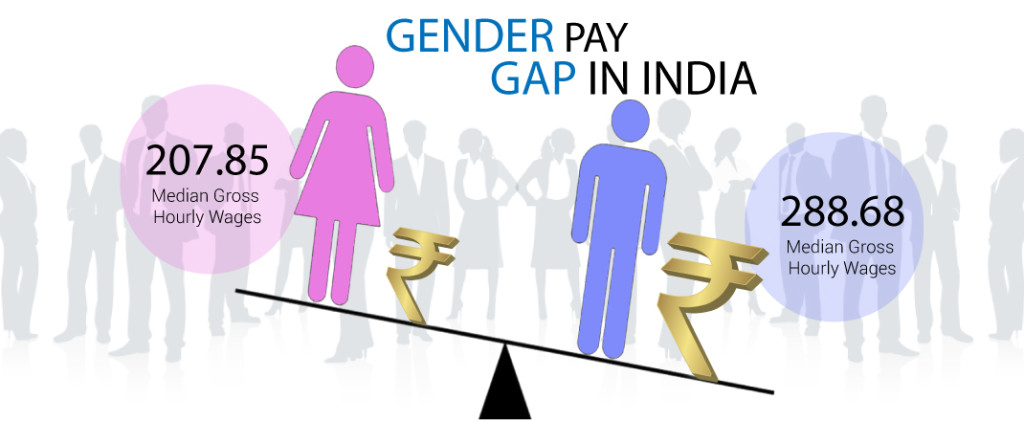Gender pay gap in India
The gender pay gap in India is as high as 27%, according to the latest Monster Salary Index report. Not only in India, the debate over disparity in wages among male and women employees in the world is fetching interesting facts and socio-cultural factors about this long-standing discrimination.
Glassdoor, a job review site, recently divulged a global gender pay gap survey based on 534,000 salary reports from all over the world. The report states women employees earn 24.1% less than men if considered globally. However, the situation in India seems worse in terms of gender pay gap standing at 27%, according to the latest report by online job portal Monster India.
The figures differ in various sectors such as the financial services in India depict the lowest gender pay gap of 17.7% while the manufacturing sector stands at a massive inequality of payment of 34.9%.
Parenthood duties
Exploring the reasons behind the high pay gap between male and female employers in India, the Monster report points out factors like career breaks due to parenthood duties and age-old practice of paying the male workers higher wages. Findings such as male supervisors out-earn female supervisors, and males are compensated higher for more experience than female with similar experience are still debatable on the merits of ethical work space. It is observed that men earn a gross hourly wage of INR 311.78, while a female is compensated INR 256.51 per hour in India.
“The situation is far from desired in India, especially when the country is gearing towards inclusive development,” said Sanjay Modi, the Managing Director of Monster India. Speaking about the poor pay structure in the education system of India, which is ironically one of the key factors determining salaries, Modi added, “If the government wants to work with a vision of ‘jobs for all’ and a skilled India, then it should plan a sound education ecosystem with high quality teaching staff. Hence, it has become imperative to make the salaries of teachers and researchers (mostly women) competitive, if not lucrative.”
Socio-cultural factors behind gender pay gap
In India, where apposite employment is still a major concern, bridging the gender pay gaps can be tricky. The preconceived notion of employers about the job capabilities of women and the acceptance of male workers in terms of taking orders from women in the interest of the company’s productivity and profit are serious concerns. To site a global trend published in Social Forces, it is also observed that when women began to transition into typically male-dominated careers, the overall average pay in that sector began to drop. As India looks ahead to encourage an inclusive growth, it is quite alarming to sense the growing dissatisfaction among the women employees in the country. However, factors that determine the wage of a worker should be specifically dependent on the education, work experience, skills and consider race, sex, colour and geography the least.
Indian companies should soon consider revising their pay slips to address the growing displeasure about the gender pay gap.
A poor record in UK, Sweden does better
In Europe, UK is reportedly manifesting a poor record for gender equality at work. It is globally ranked at the 11th spot out of 18 countries much behind the likes of US, France, Spain, Sweden, Norway and Finland as far as gender pay gap and board level representation is concerned.
The “cost of motherhood” https://t.co/YQYOzJEYgN #genderpaygap via @GlassdoorUK
— HRBullets (@HRBullets) May 18, 2016
Sweden and Norway are found to have the best overall balance between men and women in work: Greece and Italy the worst. Studies revealed that working mothers suffered the most in the UK. While the gender pay gap for women in the UK with no children is slightly more than 7%, for those with at least one child it leaps to 21%.
As far as the US is concerned, comparing it with the global report on gender gap, Glassdoor found women earn 24.1% less than what men earn, or USD 0.76 on the dollar. The figure is very similar to the US Census Bureau reports stating that women in the US working full-time year-round are paid USD 0.79 for every dollar paid to men.
The global reactions are mixed as well. While an overwhelming majority of employed adults globally (nearly 9 out of 10) believe men and women should be paid equally for equal work, it is a smaller majority (7 out of 10) who believe men and women are indeed being paid equally at their company for equal work.










